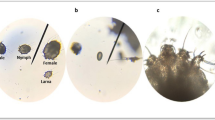Abstract
With the purpose of studying the immunological components of granulomatous hypersensitivity in patients infecteded with Paracoccidioides brasiliensis, we used the model of in vitro granuloma formation developed for schistosomiasis studies, that correlates with in vivo granulomatous reactivity occurring around eggs trapped in organs of infected donors. In this case, granuloma formation can be determined examining cellular reactivity manifested as multiple cell layers surrounding antigen-conjugated polyacrilamide beads. Our results showed that peripheral blood mononuclear cells (PBMC) obtained from acute treated and chronic paracoccidioidomycosis patients proliferate and generate in vitro granulomas in response to P. brasiliensis antigens (PbAg). In contrast, no proliferation or granuloma formation were observed when PBMC from acute non-treated patients were used. These studies demonstrate the feasibility of investigating granulomatous hypersensitivity in P. brasiliensis-infected patients by using an in vitro granuloma model.
Similar content being viewed by others
Author information
Authors and Affiliations
Rights and permissions
About this article
Cite this article
Vinicius Guimarães Franco, M., Miranda Goes, A. & Cota Koury, M. Model of in vitro granulomatous hypersensitivity in human paracoccidioidomycosis. Mycopathologia 137, 129–136 (1997). https://doi.org/10.1023/A:1006883313078
Issue Date:
DOI: https://doi.org/10.1023/A:1006883313078




